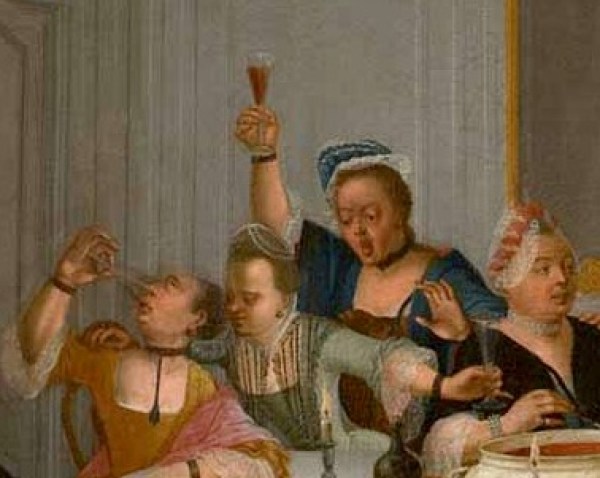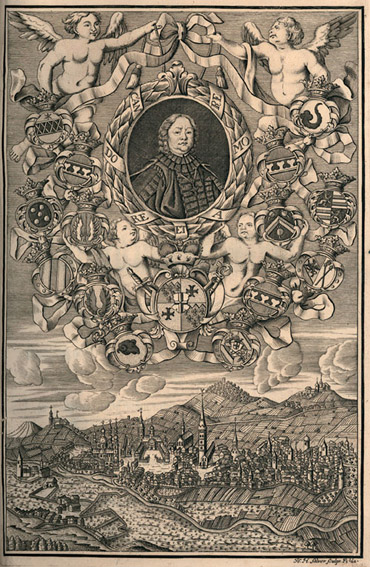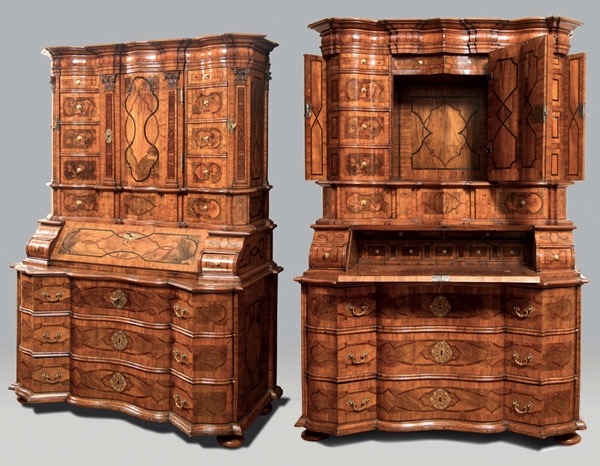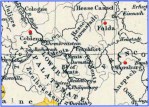
Three hundred years ago today, Jacob Arend (1688-1744), a journeyman cabinetmaker in his brother’s workshop in Würzburg, wrote a letter and hid it in a magnificent Baroque writing cabinet. The letter was not placed in one of the secret drawers common in 18th-century desks and cabinets – he hid the letter so well it was not found for 253 years. Sometime after writing the letter Jacob and fellow journeyman, Johannes Witthalm, left Würzburg to seek their fortunes elsewhere.
In his letter Jacob allowed us a rare look into his world and the extreme contrast between his living conditions and the luxury of the writing cabinet he and Johannes had made. You can read Jacob’s letter and what is known about his life here.
In the last year I found two notes that shed some light on what happened to Jacob in the ten-year gap between leaving Würzburg in 1716 and arriving in Fulda in 1726. The clue comes by way of Carl Maxillian Mattern (1705-1774), a more well-known German cabinetmaker. While C.M. Mattern was a journeyman he worked for a time with Jacob Arend in Pfaffendorf across the river from Coblentz (Koblentz). So, at one point during the ten-year gap Jacob returned to his hometown of Coblentz.

The possible dates for Mattern working with Jacob in Pfaffendorf are 1722-1726. The next tidbit is Jacob was called to the court of Fulda by Prince-Abbot Adolf. In March of 1726, Konstantin, Prince-Abbot of Fulda, died and was succeeded by Adolf von Dalberg (pictured below with a view of Fulda). Prince-Abbot Adolf ruled from 1726 to 1737.

There are a few pieces made by Jacob in museums, including the writing cabinet in the Victoria and Albert Museum. I found one more writing cabinet that was up for auction a while ago.

The cabinet is dated 1738 making it a work from Jacob’s Fulda shop. The dimensions are 200 cm x 134 cm x 69 cm (78.7 in x 52.8 in x 27.2 in). The veneers are nut wood, nut wood root and plum wood on a softwood base. This cabinet is not as ostentatious, nor does it have the exotic woods and rare materials as that last cabinet made in Würzburg, but it is splendid nevertheless.
At the end of Jacob’s letter he asked that the finder drink to their (his and Johannes’) health, or if they were no longer living, to their eternal rest and salvation. Scott Stahl, a dedicated reader of the Lost Art Press blog, suggested we follow Jacob’s wish and designate October 22 as Jacob Arend Day. So, raise your glass and honor Jacob and the artisans of the past.
Dinner tonight is cabbage and peas all around.
–Suzanne Ellison
